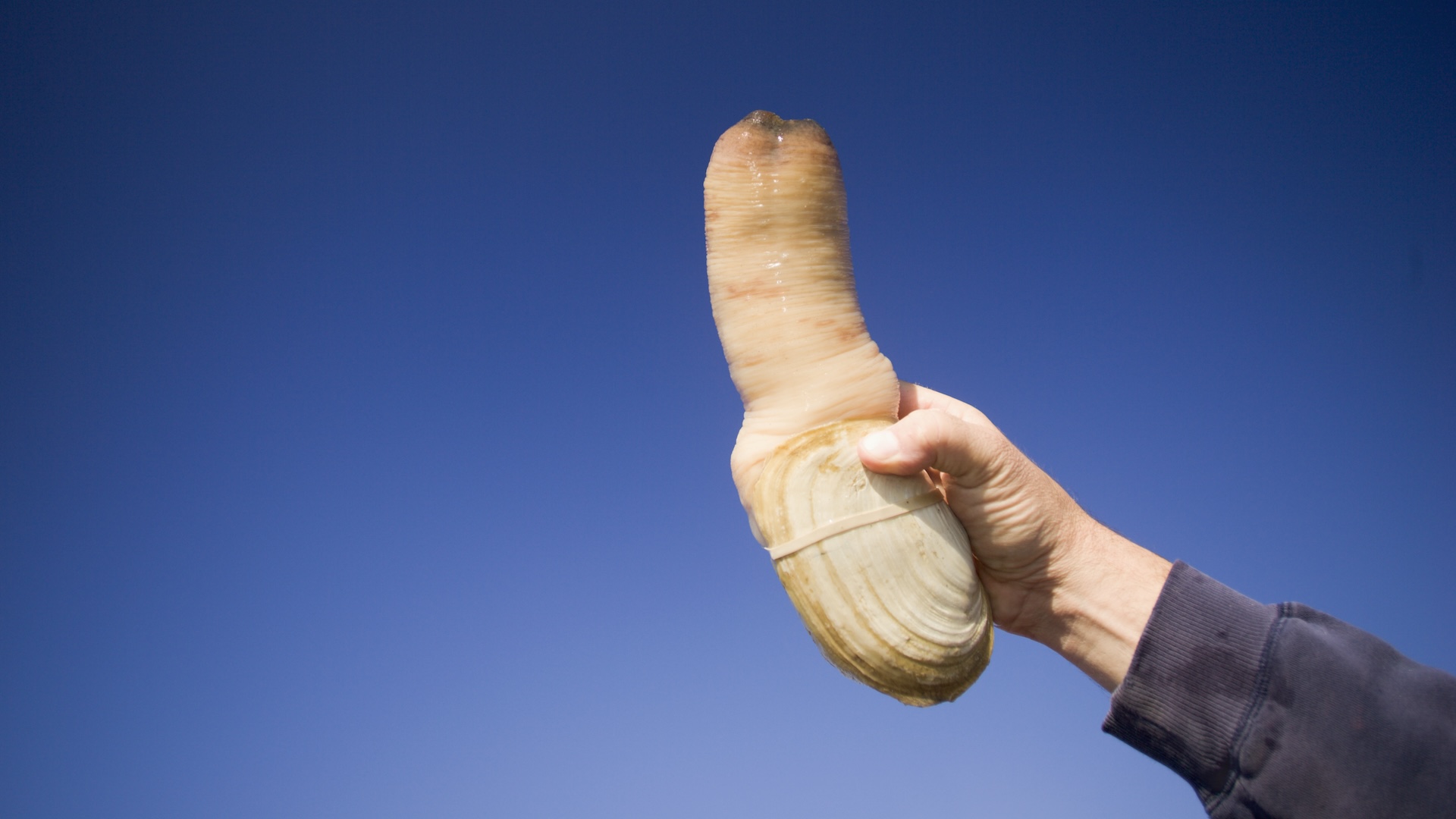
Name: Pacific geoduck (Panopea generosa)
Where it lives: In the Pacific Ocean, off the west coast of North America (Alaska to Baja California, Mexico)
What it eats: Phytoplankton, pelagic crustaceans and fish larvae
Why it's awesome: Pacific geoducks are large, saltwater clams that can live longer than 165 years. These phallic-looking sea creatures have very long necks called siphons and are considered a culinary delicacy.
The name geoduck — pronounced "gooey duck" — is thought to come from the Native American Nisqually word "gweduc," which means "dig deep." They are the largest burrowing clams in the world and live in the ocean floor to a depth of 3 feet (1 meter).
Geoducks are bivalves, which means their bodies are compressed between a shell that consists of two hinged parts. They have a foot, which helps them dig into the sediment and anchor to the ground. To eat, the mollusk sucks in seawater, filters it for plankton and nutrients, and squirts out the excess through its siphon. This appendage has two openings at the end — one for taking in oxygen and phytoplankton, and one for releasing excess water.
Related: 10 phallic flora and fauna that look just like penises
Although a geoduck’s shell usually measures 6 to 8 inches (15 to 20 centimeters) in length, the siphon can grow longer than 3 feet. In their first three to five years, geoducks grow up to 1.5 pounds (0.7 kilogram). On average, geoducks weigh around 2.5 pounds (1.1 kg), but they can reach 9 pounds (4 kg).
Adult geoducks have separate sexes, and they reach sexual maturity at around 3 years old. Male geoducks are capable of reproducing for more than 100 years. Females have very large ovaries that contain many millions of eggs, and they release between 1 million and 2 million eggs per spawn.
Whereas other clams move to avoid predators, geoducks react by retracting their siphons. They are preyed upon by crabs, dogfish, sea otters and starfish. Geoducks are eaten around the world and are served cooked or raw in sushi or sashimi. They are harvested in the wild as well as farmed, particularly in Washington state. These clams are sometimes purported to have aphrodisiac properties, likely because of their shape — but there is no scientific evidence to support this claim.







